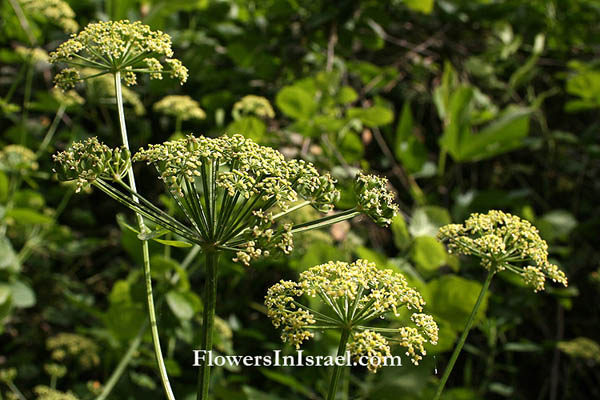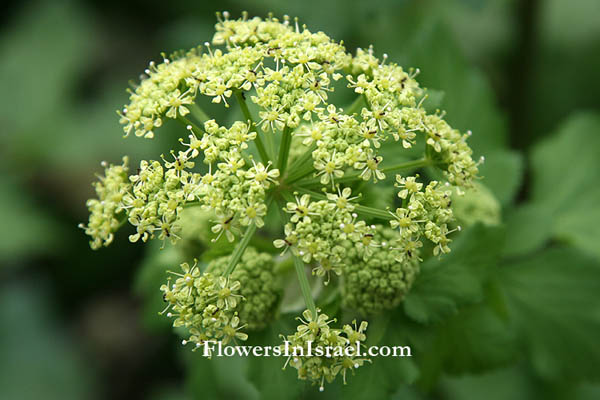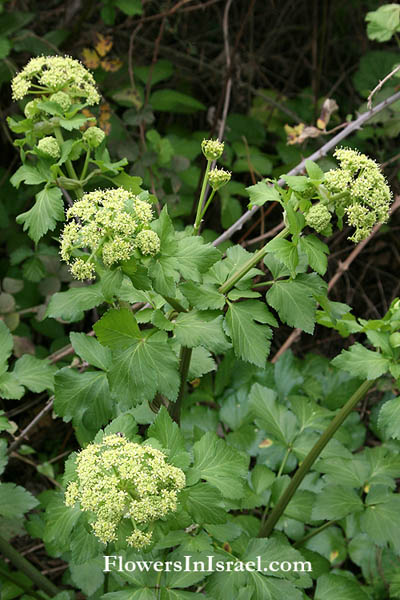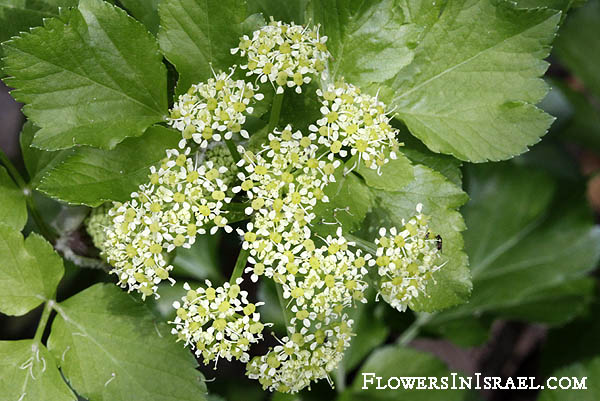Hebrew: מורית גדולה, Arabic: السمورنيون البقلي
| Scientific name: | Smyrnium olusatrum L. | |
| Common name: | Alexanders, Horse Parsley, Wild celery | |
| Hebrew name: | מורית גדולה | |
| Arabic name: | السمورنيون البقلي | |
| Plant Family: | Umbelliferae / Apiaceae, סוככיים |

|
| Life form: | Hemicryptophyte | |
| Leaves: | Alternate, rosette, dissected, dentate or serrate | |
| Flowers: | Yellow | |
| Flowering Period: | March, April, May | |
| Habitat: | Mediterranean maquis and forest | |
| Distribution: | Mediterranean Woodlands and Shrublands | |
| Chorotype: | Mediterranean | |
| Summer shedding: | Ephemeral |

Derivation of the botanical name: Smyrnium, Greek, myrrh, from smell. olusatrum, Latin olus, potherb or vegetable; atrum, gloomy black, because of its seeds being notably large and utterly black. The scientific name of alexanders (Smyrnium olusatrum) reflects the discredited etymology from olus atrum. The Hebrew name: מורית, morit, Smyrnium.
Alexanders (smyrnium olsatrum) is Greek hipposelinon or smyrnion, Latin holusatrum. Smyrnium olusatrum was known to Theophrastus (c. 371 – c. 287 BCE), in 322 BCE, and its cultivation as a pot herb was described by Pliny the Elder (23-79 CE). Theophrastus, Enquiry into Plants:


Location: Hermon Stream Nature Reserve 
Location: Hermon Stream Nature Reserve |